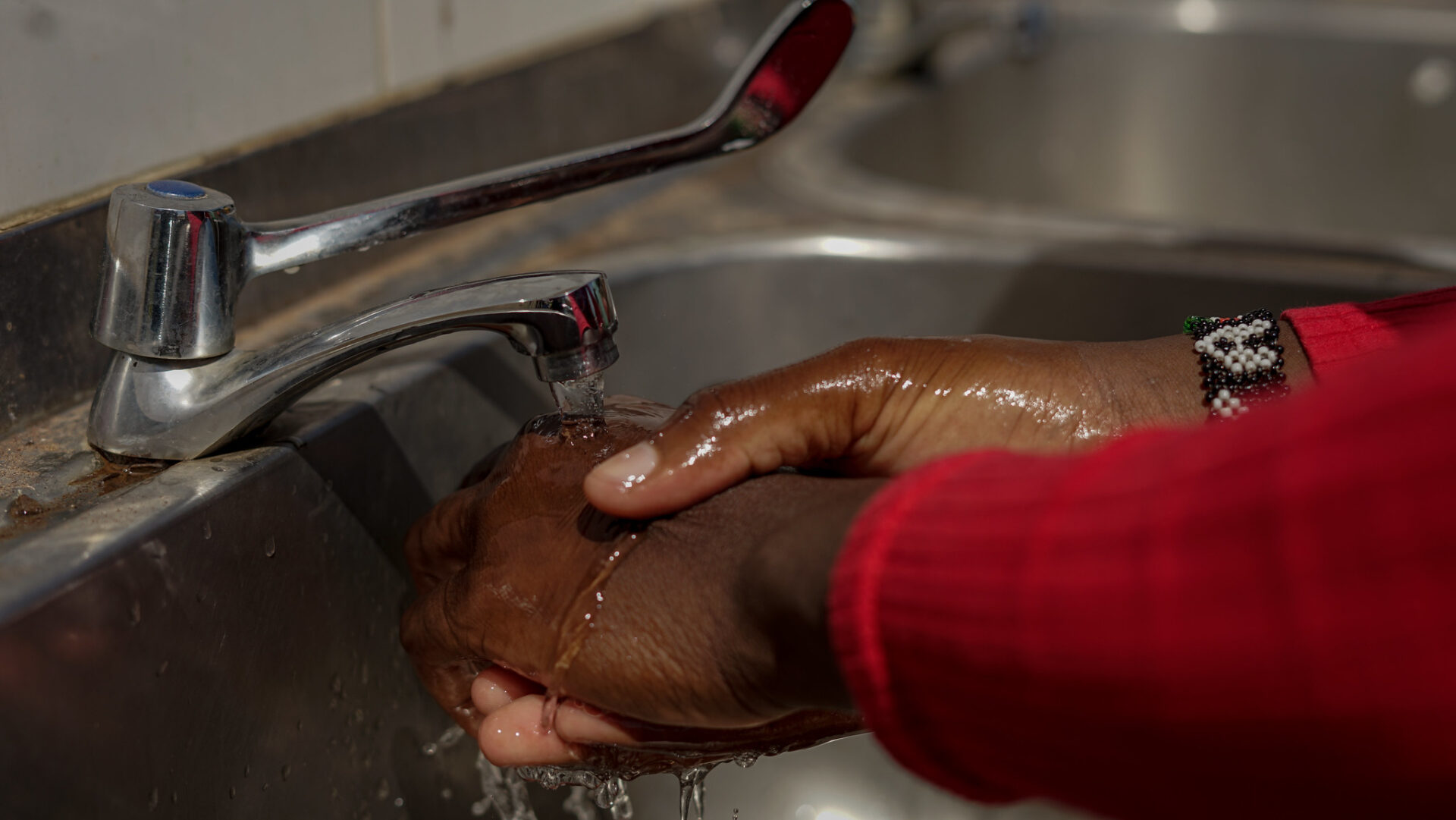Pivoting to Protect Vulnerable Populations
When COVID-19 Emerged, ICAP Pivoted To Help Kenya Face The New Threat
As news of the discovery of a new coronavirus broke, the outbreak in China was rapidly followed by devastating impact in Italy, France and other countries in Europe. The first reported infections in the United States on the West Coast in Washington State and California were quickly followed by alarming surges of illness and death in New York and the East Coast. With the pandemic raging in Asia, Europe and North America, for Africa it was only a matter of time. With creative and determined actions, large and small, Kenya was committed to meeting the threat head on. Building on a 15-year relationship with the Government of Kenya, ICAP was ready to provide support.

Kenya has only 200 intensive care beds for its entire population of 50 million people – compared to the United States, which has 34 beds for every 100,000 people – so the threat of COVID-19 loomed large. Infection prevention and control was of the upmost urgency to limit the spread of the virus while facilities were readied for what was sure to come.
ICAP in Kenya had a strong foundation to build on. Since 2015, ICAP has supported the Jaramogi Oginga Odinga Teaching and Referral Hospital (JOOTRH) in Kisumu City. ICAP has provided technical support for care and treatment for people living with HIV as well as for JOOTRH’s Gender Violence Center and its new Methadone Replacement Center and Comprehensive Care Center for people who inject drugs. By partnering with JOOTRH leadership and providing technical collaboration, and capacity building and training support, ICAP had already contributed enabling JOOTRH to serve as a center of excellence.
 In March 2020, when only 83 COVID-19 cases had been identified in Kenya, ICAP and JOOTRH leadership took the proactive step of establishing a screening and triage center in anticipation of a coming surge. This would build on prior installation of several hand-washing sinks at the JOORTH main gate where incoming patients and staff could wash their hands. Now, ICAP added a series of tents where staff and incoming patients and visitors a day could be screened for COVID-19 as they passed through triage checkpoints to test for symptoms, record travel history and determine if the person should be admitted for further assessment. As the crisis unfolded, ICAP developed a screening app in order to more efficiently collect data on client demographics, travel history, and symptoms.
In March 2020, when only 83 COVID-19 cases had been identified in Kenya, ICAP and JOOTRH leadership took the proactive step of establishing a screening and triage center in anticipation of a coming surge. This would build on prior installation of several hand-washing sinks at the JOORTH main gate where incoming patients and staff could wash their hands. Now, ICAP added a series of tents where staff and incoming patients and visitors a day could be screened for COVID-19 as they passed through triage checkpoints to test for symptoms, record travel history and determine if the person should be admitted for further assessment. As the crisis unfolded, ICAP developed a screening app in order to more efficiently collect data on client demographics, travel history, and symptoms.
By year’s end, nearly 120,000 people had passed through the screening center. While working to control infection and identify people with the coronavirus, ICAP also helped set up a COVID-19 isolation ward inside the hospital, installed washing machines so that bedding, towels and hospital gowns could be laundered within the ward, and established a kitchen so that patient and staff meals could be prepared on-site. ICAP also arranged for patient treatment in this new isolation unit, creating a system for remote care, installing CCTV and setting up an Internet-based system so senior health care professionals could consult with patients face-to-face through tablets.
““This rapid response – the investment in equipment, staff training, and innovative technology solutions that enabled clinicians to provide high quality care remotely as patients progressed from isolation to discharge – prevented a lot of mortality.”
Dr. Gregory Ganda,
Medical Director, Government of Kisumu
 The COVID-19 training needed to be practical and focused. Fortunately ICAP had already established a training platform using ZOOM technology to provide HIV training for regional government health care workers. The ICAP team, together with specialists in the hospital, quickly set up a parallel internet-based training program on COVID epidemiology, diagnosis and treatment. The hospital staff, with technical assistance from ICAP, recorded the training videos for each module, serving as trainers for their peers. Through this partnership and collaboration with government leaders, COVID-19 training was efficiently disseminated to health care workers throughout the county as well as to university medical students.
The COVID-19 training needed to be practical and focused. Fortunately ICAP had already established a training platform using ZOOM technology to provide HIV training for regional government health care workers. The ICAP team, together with specialists in the hospital, quickly set up a parallel internet-based training program on COVID epidemiology, diagnosis and treatment. The hospital staff, with technical assistance from ICAP, recorded the training videos for each module, serving as trainers for their peers. Through this partnership and collaboration with government leaders, COVID-19 training was efficiently disseminated to health care workers throughout the county as well as to university medical students.
Funding: The President’s Emergency Plan for AIDS Relief (CDC) through the Centers for Disease Control and Prevention (CDC) and Zhao Public Health Fund
COLLABORATIVE
PROACTIVE
FLEXIBLE



 The COVID-19 pandemic arrived in
The COVID-19 pandemic arrived in 